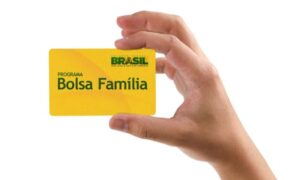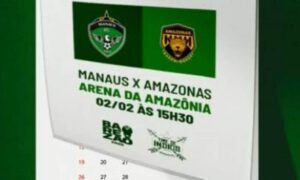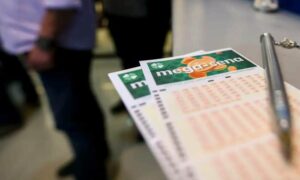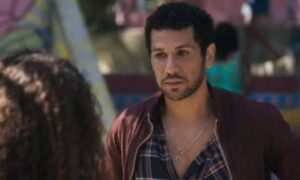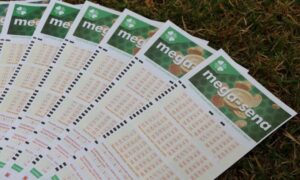On May 8, 2025, white smoke rose from the Sistine Chapel’s chimney, announcing the election of Cardinal Robert Francis Prevost as Leo XIV, the first American pope. The 69-year-old Chicago native, known for his reformist views and extensive work in Latin America, was chosen by 133 cardinals in a swift conclave. U.S. President Donald Trump, who attended Pope Francis’s funeral in April, promptly congratulated the new pontiff, describing the election as a “tremendous moment” for global Catholics. His message, shared on Truth Social, highlighted Prevost’s American heritage and potential to unify the faithful.
The conclave, spanning just two days, saw Prevost secure at least 89 votes, reflecting strong cardinal support. His election followed global anticipation after Francis’s death on April 21. Trump’s endorsement, while prominent, sparked varied reactions due to his earlier controversial posts, including an AI-generated image of himself as pope. The Vatican focused on Leão XIV’s first appearance, where he addressed thousands in St. Peter’s Square.
- Key election moments:
- White smoke appeared at 2:17 p.m. Brasília time.
- Prevost adopted the name Leão XIV, evoking Leão XIII’s legacy.
- Trump’s congratulatory post reached millions within hours.
Leão XIV’s papacy begins in a polarized world, with his American background and reformist stance drawing global attention. Trump’s vocal support underscores the historic significance of a U.S. pope leading 1.4 billion Catholics.
Trump’s public endorsement
President Trump’s congratulation of Leão XIV was immediate and widely circulated. On Truth Social, he praised Prevost as a “strong leader” and emphasized his Chicago roots, calling him “a proud American guiding the Church.” The post, amplified by the White House’s official X account, garnered millions of views. Trump avoided mentioning his earlier jest about wanting to be pope, which had drawn criticism from Catholic leaders.
His endorsement followed a nuanced relationship with the Catholic Church. Trump and First Lady Melania Trump, a practicing Catholic, attended Francis’s funeral in Rome alongside world leaders. His choice of a blue suit over traditional black sparked minor critique, but his congratulatory message to Leão XIV was framed as a unifying gesture, focusing on faith and leadership.
- Elements of Trump’s statement:
- Lauded Prevost’s “deep faith and wisdom.”
- Highlighted the historic milestone of an American pope.
- Urged global unity under Leo XIV’s guidance.
The Vatican did not comment on Trump’s remarks, prioritizing Leão XIV’s initial address. Prevost’s election places him at the heart of global diplomacy, with Trump’s support signaling potential alignment on shared priorities.
First American pontiff
Robert Francis Prevost, now Leo XIV, was born in Chicago on September 14, 1955. His election as the first U.S. pope breaks a centuries-long tradition of European-dominated papacies. Raised in a working-class family, Prevost joined the Augustinian order at 22, embarking on a path blending academic rigor with pastoral service. His American upbringing, in a country where Catholics are a minority, shapes his unique perspective as pontiff.
Prevost’s theological training began at the Catholic Theological Union in Chicago, followed by canon law studies at the University of St. Thomas Aquinas in Rome. Ordained in 1982, he was sent to Peru, where he served in Piura, Trujillo, and Chiclayo. His fluency in Spanish and deep ties to Latin American communities earned him widespread respect, positioning him as a bridge between North and South America.
His rapid ascent in the Vatican—named cardinal in 2023 and prefect of the Dicastery for Bishops—highlighted his administrative prowess. Prevost’s reformist views, aligned with Francis’s focus on mercy and inclusivity, made him a compelling choice for cardinals seeking continuity.
Latin American influence
Prevost’s decades in Peru are central to his career. Arriving in 1984, he worked in Piura, a region grappling with poverty. His tenure in Trujillo during the 1980s and 1990s coincided with Peru’s internal conflict under Alberto Fujimori’s regime. Prevost publicly demanded accountability for injustices, reflecting his commitment to social justice.
In 2014, he became administrator of the Diocese of Chiclayo, later ordained as bishop. His leadership strengthened rural parishes and promoted interfaith dialogue. In 2023, three women accused him of delays in addressing clergy abuse allegations from the 1990s. The diocese denied cover-up claims, asserting Prevost followed Vatican protocols.
- Peruvian contributions:
- Expanded educational programs for impoverished communities.
- Fostered dialogue with indigenous groups.
- Improved infrastructure for remote parishes.
The ongoing Vatican investigation into the allegations remains unresolved. Prevost’s Latin American experience equips him to address global Catholic challenges, particularly in regions with growing congregations.
Conclave’s swift resolution
The conclave, beginning May 7, 2025, was remarkably brief. With 133 cardinals, including seven from Brazil, the process saw black smoke after the first three voting rounds. By the fourth round on May 8, Prevost secured the required two-thirds majority, with white smoke at 2:17 p.m. Brasília time. The speed surprised analysts, who anticipated a longer deliberation given the diverse candidate pool.
Cardinals upheld strict secrecy, with no external communication permitted. Prevost’s election balanced reformist ideals and administrative experience. His short tenure as a cardinal—less than two years—made his selection unexpected but underscored his broad appeal.
Trump’s congratulatory message noted the conclave’s efficiency, calling it a “clear sign of unity.” The Vatican’s focus remained on Leão XIV’s first address, which emphasized humility and service.
Vatican roles before papacy
Before his election, Prevost held significant Vatican positions. As prefect of the Dicastery for Bishops, he shaped global bishop appointments, prioritizing pastoral leaders. His role as president of the Pontifical Commission for Latin America strengthened Vatican ties with the region, home to nearly 40% of the world’s Catholics.
His work navigated diverse episcopal needs, from addressing clergy shortages in Africa to supporting urban dioceses in Europe. Prevost’s diplomatic skill and canon law expertise made him a trusted Curia figure. His leadership during Francis’s 2025 hospitalization, when he led a public prayer, highlighted his pastoral sensitivity.
- Vatican responsibilities:
- Oversaw bishop nominations across continents.
- Promoted clergy training in Latin America.
- Coordinated responses to regional pastoral issues.
His brief cardinalship, starting in 2023, marked a rapid rise, culminating in his election as pope.
Trump’s controversial prelude
Trump’s congratulation of Leo XIV followed a controversial episode. On May 3, he posted an AI-generated image of himself as pope on Truth Social, later amplified by the White House’s X account. The image, showing Trump in papal vestments, drew sharp criticism from Catholic leaders, including the New York State Catholic Conference, which called it “disrespectful” during the mourning period for Francis.
Cardinal Timothy Dolan, whom Trump had previously endorsed as a potential pope, described the image as a “brutta figura,” or bad impression. Trump later claimed he had “nothing to do with” the post, calling it a joke and asserting Catholics found it amusing. The controversy did not overshadow his congratulatory message to Leão XIV, which focused on Prevost’s leadership.
- Reactions to the AI image:
- New York State Catholic Conference labeled it “mockery.”
- Former Italian PM Matteo Renzi called it offensive.
- Trump defended it as lighthearted, citing his wife’s approval.
The Vatican declined to comment on the image, keeping attention on Leão XIV’s election.
Leo XIV’s first address
Leo XIV’s debut as pope was a global moment. From St. Peter’s Basilica’s balcony, he delivered a brief message of unity, dressed in traditional papal attire. His calm demeanor contrasted with the weight of his new role, drawing cheers from an estimated 50,000 people in St. Peter’s Square.
His choice of the name Leo XIV, recalling Leo XIII’s reformist legacy, signaled a blend of tradition and progress. The address emphasized humility, asking for prayers from the faithful. It set a tone of connection with the global Catholic community, aligning with his reformist vision.
Prevost’s fluency in English and Spanish, honed in Peru, will aid his communication with diverse audiences. His first words as pope underscored a commitment to serving the Church’s 1.4 billion members.
Theological and academic roots
Prevost’s academic background bolsters his leadership. His theology degree from Chicago grounded him in pastoral care, while his Roman studies in canon law sharpened his grasp of Church governance. This dual expertise bridges scholarship and administration.
His time at the University of St. Thomas Aquinas in Rome was formative, immersing him in canon law’s complexities. This knowledge will guide his handling of ecclesiastical appointments and disciplinary issues. Colleagues praise his ability to simplify theological concepts, a skill that may enhance his global outreach.
His academic rigor complements his pastoral experience, equipping him to address theological disputes and social challenges facing the Church.
Francis’s lasting influence
Pope Francis’s 12-year papacy reshaped the Church, and Leo XIV is poised to extend this legacy. Francis’s focus on mercy, environmental care, and interfaith dialogue redefined the Church’s image. Prevost, a key figure in Francis’s Curia, shares these values.
During Francis’s hospitalization in early 2025, Prevost led a public prayer in St. Peter’s Square, earning admiration for his pastoral depth. His alignment with Francis’s reforms, including appointing bishops focused on social justice, positioned him as a natural successor.
- Francis’s influence on Prevost:
- Promoted inclusion of marginalized communities.
- Urged bishops to prioritize pastoral duties.
- Reinforced the Church’s social justice commitment.
Leo XIV faces the task of sustaining this vision while addressing new global realities.
Global Catholic landscape
Leo XIV assumes the papacy at a pivotal moment. The Church faces declining membership in Europe, growth in Africa and Asia, and debates over women’s roles and clerical celibacy. Prevost’s reformist leanings suggest a thoughtful approach, though his reserved style may temper bold public gestures.
His American background introduces a new dynamic to the Vatican, historically led by European popes. His understanding of U.S. cultural trends could bolster the Church’s presence in a nation where Catholicism competes with secularism and evangelicalism.
With over 1.3 billion Catholics worldwide, Leão XIV’s early actions will be closely watched. His focus on unity signals a papacy aimed at bridging divides, both within the Church and beyond.
Diplomatic implications
Trump’s congratulation of Leo XIV highlights the diplomatic weight of an American pope. The U.S., a global superpower, now has a pontiff who understands its cultural and political dynamics. Prevost’s Latin American ties could also strengthen Vatican relations with the Global South.
His role as prefect of the Dicastery for Bishops gave him insight into the Church’s global operations, preparing him for diplomatic challenges. Trump’s endorsement, while symbolic, underscores the potential for collaboration on issues like religious liberty.
Prevost’s fluency in English, the global lingua franca, will aid his engagement with world leaders. His papacy may reshape Vatican-U.S. relations, with Trump’s support setting an early tone.

On May 8, 2025, white smoke rose from the Sistine Chapel’s chimney, announcing the election of Cardinal Robert Francis Prevost as Leo XIV, the first American pope. The 69-year-old Chicago native, known for his reformist views and extensive work in Latin America, was chosen by 133 cardinals in a swift conclave. U.S. President Donald Trump, who attended Pope Francis’s funeral in April, promptly congratulated the new pontiff, describing the election as a “tremendous moment” for global Catholics. His message, shared on Truth Social, highlighted Prevost’s American heritage and potential to unify the faithful.
The conclave, spanning just two days, saw Prevost secure at least 89 votes, reflecting strong cardinal support. His election followed global anticipation after Francis’s death on April 21. Trump’s endorsement, while prominent, sparked varied reactions due to his earlier controversial posts, including an AI-generated image of himself as pope. The Vatican focused on Leão XIV’s first appearance, where he addressed thousands in St. Peter’s Square.
- Key election moments:
- White smoke appeared at 2:17 p.m. Brasília time.
- Prevost adopted the name Leão XIV, evoking Leão XIII’s legacy.
- Trump’s congratulatory post reached millions within hours.
Leão XIV’s papacy begins in a polarized world, with his American background and reformist stance drawing global attention. Trump’s vocal support underscores the historic significance of a U.S. pope leading 1.4 billion Catholics.
Trump’s public endorsement
President Trump’s congratulation of Leão XIV was immediate and widely circulated. On Truth Social, he praised Prevost as a “strong leader” and emphasized his Chicago roots, calling him “a proud American guiding the Church.” The post, amplified by the White House’s official X account, garnered millions of views. Trump avoided mentioning his earlier jest about wanting to be pope, which had drawn criticism from Catholic leaders.
His endorsement followed a nuanced relationship with the Catholic Church. Trump and First Lady Melania Trump, a practicing Catholic, attended Francis’s funeral in Rome alongside world leaders. His choice of a blue suit over traditional black sparked minor critique, but his congratulatory message to Leão XIV was framed as a unifying gesture, focusing on faith and leadership.
- Elements of Trump’s statement:
- Lauded Prevost’s “deep faith and wisdom.”
- Highlighted the historic milestone of an American pope.
- Urged global unity under Leo XIV’s guidance.
The Vatican did not comment on Trump’s remarks, prioritizing Leão XIV’s initial address. Prevost’s election places him at the heart of global diplomacy, with Trump’s support signaling potential alignment on shared priorities.
First American pontiff
Robert Francis Prevost, now Leo XIV, was born in Chicago on September 14, 1955. His election as the first U.S. pope breaks a centuries-long tradition of European-dominated papacies. Raised in a working-class family, Prevost joined the Augustinian order at 22, embarking on a path blending academic rigor with pastoral service. His American upbringing, in a country where Catholics are a minority, shapes his unique perspective as pontiff.
Prevost’s theological training began at the Catholic Theological Union in Chicago, followed by canon law studies at the University of St. Thomas Aquinas in Rome. Ordained in 1982, he was sent to Peru, where he served in Piura, Trujillo, and Chiclayo. His fluency in Spanish and deep ties to Latin American communities earned him widespread respect, positioning him as a bridge between North and South America.
His rapid ascent in the Vatican—named cardinal in 2023 and prefect of the Dicastery for Bishops—highlighted his administrative prowess. Prevost’s reformist views, aligned with Francis’s focus on mercy and inclusivity, made him a compelling choice for cardinals seeking continuity.
Latin American influence
Prevost’s decades in Peru are central to his career. Arriving in 1984, he worked in Piura, a region grappling with poverty. His tenure in Trujillo during the 1980s and 1990s coincided with Peru’s internal conflict under Alberto Fujimori’s regime. Prevost publicly demanded accountability for injustices, reflecting his commitment to social justice.
In 2014, he became administrator of the Diocese of Chiclayo, later ordained as bishop. His leadership strengthened rural parishes and promoted interfaith dialogue. In 2023, three women accused him of delays in addressing clergy abuse allegations from the 1990s. The diocese denied cover-up claims, asserting Prevost followed Vatican protocols.
- Peruvian contributions:
- Expanded educational programs for impoverished communities.
- Fostered dialogue with indigenous groups.
- Improved infrastructure for remote parishes.
The ongoing Vatican investigation into the allegations remains unresolved. Prevost’s Latin American experience equips him to address global Catholic challenges, particularly in regions with growing congregations.
Conclave’s swift resolution
The conclave, beginning May 7, 2025, was remarkably brief. With 133 cardinals, including seven from Brazil, the process saw black smoke after the first three voting rounds. By the fourth round on May 8, Prevost secured the required two-thirds majority, with white smoke at 2:17 p.m. Brasília time. The speed surprised analysts, who anticipated a longer deliberation given the diverse candidate pool.
Cardinals upheld strict secrecy, with no external communication permitted. Prevost’s election balanced reformist ideals and administrative experience. His short tenure as a cardinal—less than two years—made his selection unexpected but underscored his broad appeal.
Trump’s congratulatory message noted the conclave’s efficiency, calling it a “clear sign of unity.” The Vatican’s focus remained on Leão XIV’s first address, which emphasized humility and service.
Vatican roles before papacy
Before his election, Prevost held significant Vatican positions. As prefect of the Dicastery for Bishops, he shaped global bishop appointments, prioritizing pastoral leaders. His role as president of the Pontifical Commission for Latin America strengthened Vatican ties with the region, home to nearly 40% of the world’s Catholics.
His work navigated diverse episcopal needs, from addressing clergy shortages in Africa to supporting urban dioceses in Europe. Prevost’s diplomatic skill and canon law expertise made him a trusted Curia figure. His leadership during Francis’s 2025 hospitalization, when he led a public prayer, highlighted his pastoral sensitivity.
- Vatican responsibilities:
- Oversaw bishop nominations across continents.
- Promoted clergy training in Latin America.
- Coordinated responses to regional pastoral issues.
His brief cardinalship, starting in 2023, marked a rapid rise, culminating in his election as pope.
Trump’s controversial prelude
Trump’s congratulation of Leo XIV followed a controversial episode. On May 3, he posted an AI-generated image of himself as pope on Truth Social, later amplified by the White House’s X account. The image, showing Trump in papal vestments, drew sharp criticism from Catholic leaders, including the New York State Catholic Conference, which called it “disrespectful” during the mourning period for Francis.
Cardinal Timothy Dolan, whom Trump had previously endorsed as a potential pope, described the image as a “brutta figura,” or bad impression. Trump later claimed he had “nothing to do with” the post, calling it a joke and asserting Catholics found it amusing. The controversy did not overshadow his congratulatory message to Leão XIV, which focused on Prevost’s leadership.
- Reactions to the AI image:
- New York State Catholic Conference labeled it “mockery.”
- Former Italian PM Matteo Renzi called it offensive.
- Trump defended it as lighthearted, citing his wife’s approval.
The Vatican declined to comment on the image, keeping attention on Leão XIV’s election.
Leo XIV’s first address
Leo XIV’s debut as pope was a global moment. From St. Peter’s Basilica’s balcony, he delivered a brief message of unity, dressed in traditional papal attire. His calm demeanor contrasted with the weight of his new role, drawing cheers from an estimated 50,000 people in St. Peter’s Square.
His choice of the name Leo XIV, recalling Leo XIII’s reformist legacy, signaled a blend of tradition and progress. The address emphasized humility, asking for prayers from the faithful. It set a tone of connection with the global Catholic community, aligning with his reformist vision.
Prevost’s fluency in English and Spanish, honed in Peru, will aid his communication with diverse audiences. His first words as pope underscored a commitment to serving the Church’s 1.4 billion members.
Theological and academic roots
Prevost’s academic background bolsters his leadership. His theology degree from Chicago grounded him in pastoral care, while his Roman studies in canon law sharpened his grasp of Church governance. This dual expertise bridges scholarship and administration.
His time at the University of St. Thomas Aquinas in Rome was formative, immersing him in canon law’s complexities. This knowledge will guide his handling of ecclesiastical appointments and disciplinary issues. Colleagues praise his ability to simplify theological concepts, a skill that may enhance his global outreach.
His academic rigor complements his pastoral experience, equipping him to address theological disputes and social challenges facing the Church.
Francis’s lasting influence
Pope Francis’s 12-year papacy reshaped the Church, and Leo XIV is poised to extend this legacy. Francis’s focus on mercy, environmental care, and interfaith dialogue redefined the Church’s image. Prevost, a key figure in Francis’s Curia, shares these values.
During Francis’s hospitalization in early 2025, Prevost led a public prayer in St. Peter’s Square, earning admiration for his pastoral depth. His alignment with Francis’s reforms, including appointing bishops focused on social justice, positioned him as a natural successor.
- Francis’s influence on Prevost:
- Promoted inclusion of marginalized communities.
- Urged bishops to prioritize pastoral duties.
- Reinforced the Church’s social justice commitment.
Leo XIV faces the task of sustaining this vision while addressing new global realities.
Global Catholic landscape
Leo XIV assumes the papacy at a pivotal moment. The Church faces declining membership in Europe, growth in Africa and Asia, and debates over women’s roles and clerical celibacy. Prevost’s reformist leanings suggest a thoughtful approach, though his reserved style may temper bold public gestures.
His American background introduces a new dynamic to the Vatican, historically led by European popes. His understanding of U.S. cultural trends could bolster the Church’s presence in a nation where Catholicism competes with secularism and evangelicalism.
With over 1.3 billion Catholics worldwide, Leão XIV’s early actions will be closely watched. His focus on unity signals a papacy aimed at bridging divides, both within the Church and beyond.
Diplomatic implications
Trump’s congratulation of Leo XIV highlights the diplomatic weight of an American pope. The U.S., a global superpower, now has a pontiff who understands its cultural and political dynamics. Prevost’s Latin American ties could also strengthen Vatican relations with the Global South.
His role as prefect of the Dicastery for Bishops gave him insight into the Church’s global operations, preparing him for diplomatic challenges. Trump’s endorsement, while symbolic, underscores the potential for collaboration on issues like religious liberty.
Prevost’s fluency in English, the global lingua franca, will aid his engagement with world leaders. His papacy may reshape Vatican-U.S. relations, with Trump’s support setting an early tone.


